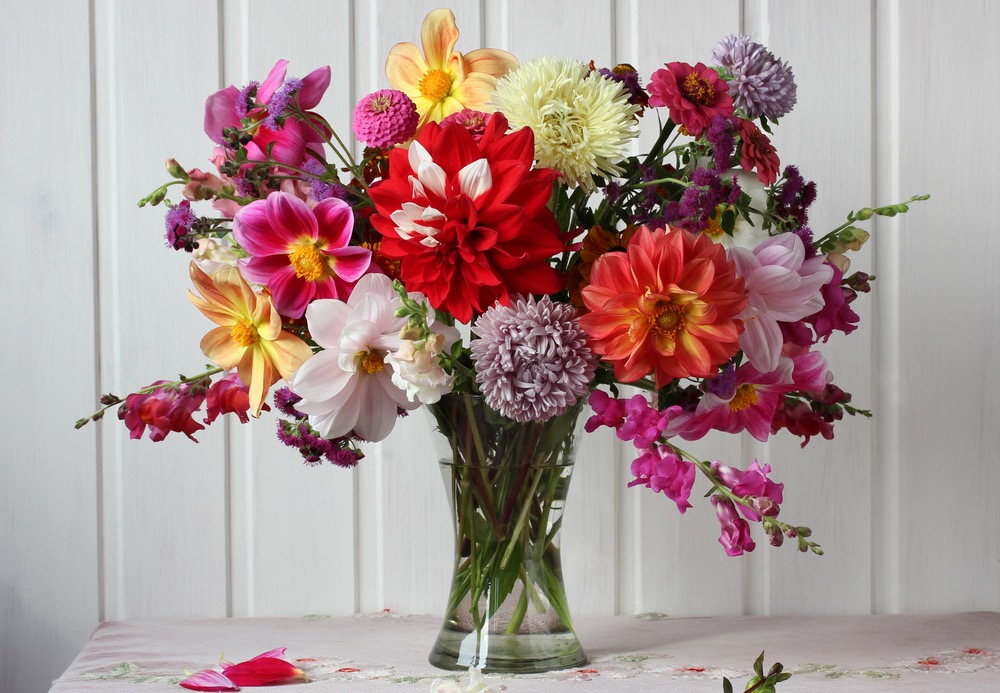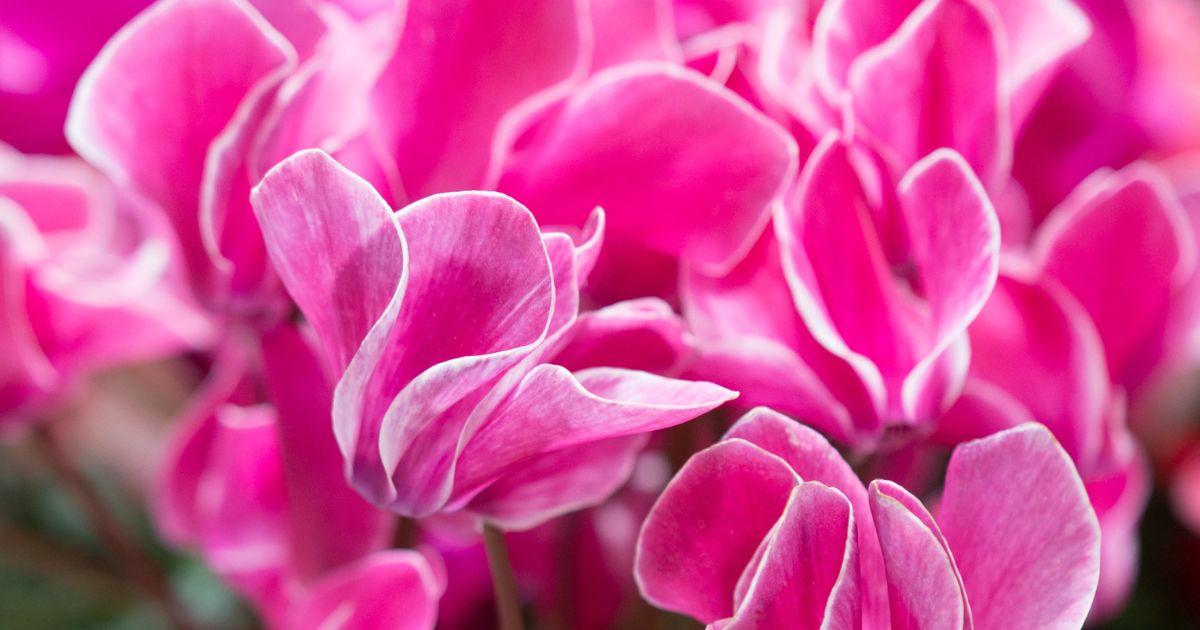Virtually all plants sold today are grown in containers and, therefore, can be planted from spring and well into the summer.
In the case of annual flowering plants, my advice is to visit your favourite garden retailer as soon as possible to get the pick of the crop. You can live by these words: The first plants in the stores are inevitably the best quality. At least, the stores are loaded with more flowers than they will be as demand rises and growers empty their greenhouses.
As you plan your purchases, you should be thinking about where you will plant what. The garden beckons colour, and your imagination runs wild with containers on the patio, deck and front walkway, as well as plants hanging out of window boxes, and who knows just what you will come up with when you turn your mind to it.
While you’re planning, it’s worth thinking about flowering plants you can grow for the sole purpose of cutting them later in the season to bring indoors.
In a recent edition of the Canadian Horticultural Therapy Association newsletter, Ann Kent, a registered horticultural therapist, reflected on a study that proves what we have known for some time: flowers are the bread of life, after bread itself, of course.
The “Home Ecology of Flowers” study took a close look at flowers and the important role they play in our daily lives. Nancy Etcoff, a psychologist at Harvard Medical School, studied the effect of the presence of flowers in the home on people’s moods, feelings and energy levels. Here are the three main findings.
- Flowers affect compassion. Participants who lived with fresh flowers in the home for up to a week felt an increase in feelings of compassion and kindness for others.
- Flowers chase away anxieties at home. People feel less negative after being around flowers in the home. There was a reported desire to see flowers when participants got up in the morning.
- Flowers increase energy. Living with flowers boosts energy and fosters a feeling of happiness and enthusiasm, regardless of whether the flowers are at work or in the home.

“As a psychologist, I’m particularly intrigued to find that people who live with flowers report fewer episodes of anxiety and depressed feelings,” Etcoff says. “Our results suggest that flowers have a positive impact on our well-being.”
Flowers that are suitable for cutting hold their blossoms for at least several days standing in water. Many garden flowers, such as day lilies, do not. Here are two short lists of the plants that I have had excellent success with growing for cut flowers.
Annual plants for cutting
Giant zinnias
Be sure to plant the varieties that grow 80 cm to one metre (31 inches to three feet) high. The short-stemmed ones may bloom earlier, but they are difficult to arrange in a vase.

Asters
For great blues and bright whites, you cannot beat asters for what I call “plugged-in colour.” You would think that these plants were somehow electrified to produce such vibrancy. The long stems of the tall-growing varieties are great in the middle of an arrangement.


Cosmos
There is nothing easier to grow from seed, so don’t waste your money on transplants. Cosmos will germinate in seven days in warm soil. They may not bloom until late July or early August, but they are worth the wait: once they start to bloom, they do not stop until late frost. For special interest, try the ‘Sea Shells’ variety. They have a wonderful fluted flower petal.

Calendula (pot marigold)
Another great annual that grows well from seed. Terrific orange and yellow colours that will knock your eyes out.

Sunflowers
You will see these available as cut flowers at the farmers’ market soon enough. They are so easy to grow if you have a sunny garden, and they are great fun for kids. Just one in a tall vase makes a statement. How could you not feel happy around these things?

Gladiolas
Not everyone’s favourite. In some cultures, they are associated with death and funerals, so if you happen to like glads, I would not recommend that you give them away to just anybody without doing a little research. That said, they are so affordable and so easy to grow from bulbs (corms, to be precise), you really should plant a few each week in your garden for the next four to six weeks to get a succession of blooms.

Centaurea (cornflower)
Grows to about 80 cm (31 inches) high, so it is best at the back of the flower bed. Blue is the signature colour, but others, like yellow, red and orange, are also available. Cornflower is perhaps the best plant for drying to bring indoors. Come winter next year, you will be glad that you grew (and picked) some Centaurea.

Nigella
We don’t grow nigella to knock our eyes out with colour. We grow it to lighten up the show. Fact is, you will want to stop and pick it while you tour your garden at the end of each day this summer. Loves the sun. Features light, airy foliage. Often called wild fennel.

Perennial plants for cutting
Astilbe
Great plants for part shade. The east side of the house is ideal for growing astilbe. With a tall panicle of finely textured flowers that stand up to 80 cm (31 inches) high, astilbe is perfect for cutting. No fragrance, and it does not like to become completely dry between watering.
Bee balm (Monarda)
A well-known, native plant that attracts bees, naturally, bee balm also cuts and holds its petals well in a vase of water indoors. Look for hybrids that offer a range of pink, red and white varieties. This plant will spread in the garden, so be prepared to dig and divide it every few years.

Black-eyed Susan (Rudbeckia)
If you are looking for yellow flowers that stand tall on reliably winter-hardy perennial plants, this one is for you. Look for ‘Goldstrum’, for up to 10 weeks of blooms. Not bad for a perennial!

Peony
The flowering time for peonies is here, and now is a good time to plant a few in a sunny garden. One or more in a vase all by themselves will even inspire someone who is sleeping. Nice fragrance, too.



Cardinal flower (Lobelia cardinalis)
Perennial salvia is one of the best hummingbird plants out there. It loves the sun and makes a great cut flower. Could you ask for more? Not a wide range of colours; mostly red.
Cut flowers, as the “Home Ecology of Flowers” study suggests, can be life transforming. It’s time to welcome those blooms.
Mark Cullen is an expert gardener, author, broadcaster and tree advocate
and holds the Order of Canada. His son, Ben, is a fourth-generation
urban gardener and a graduate of the University of Guelph and Dalhousie
University in Halifax. Follow them at markcullen.com, @MarkCullen4
(Twitter) and @markcullengardening (Facebook) and look for their latest book, Escape to Reality.
Follow them at markcullen.com, @MarkCullen4, facebook.com/markcullengardening and biweekly on Global TV’s national morning show, The Morning Show.














